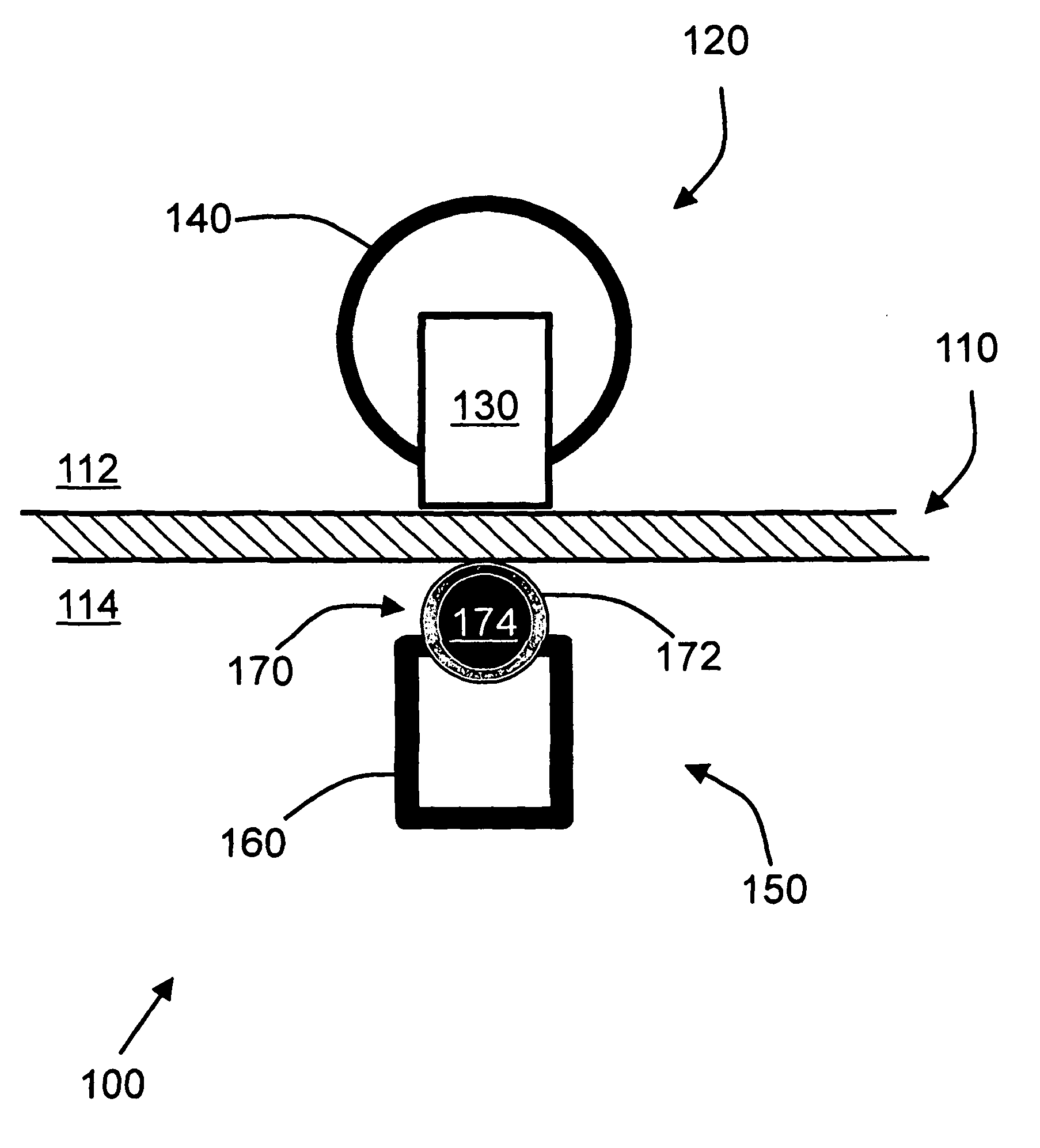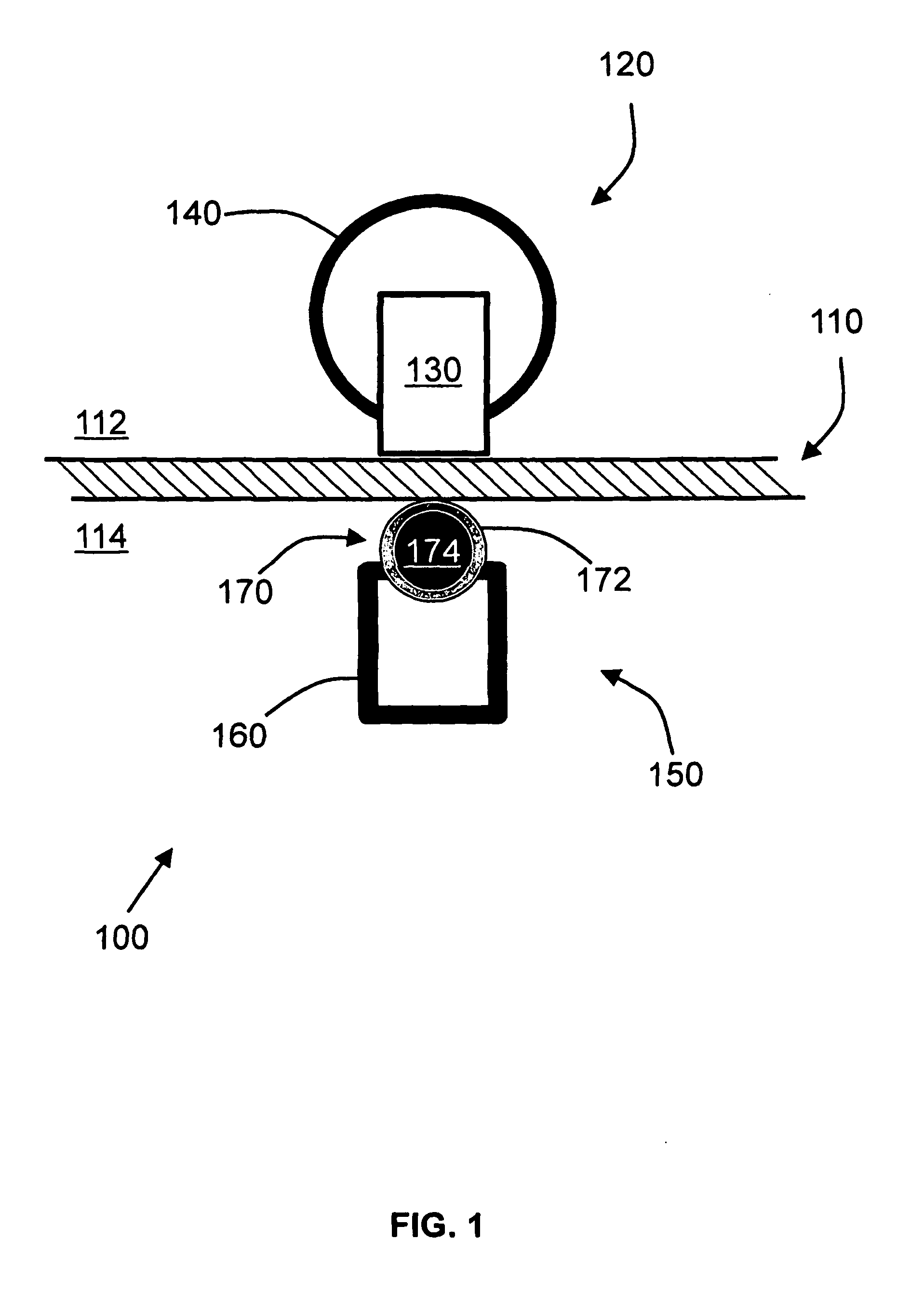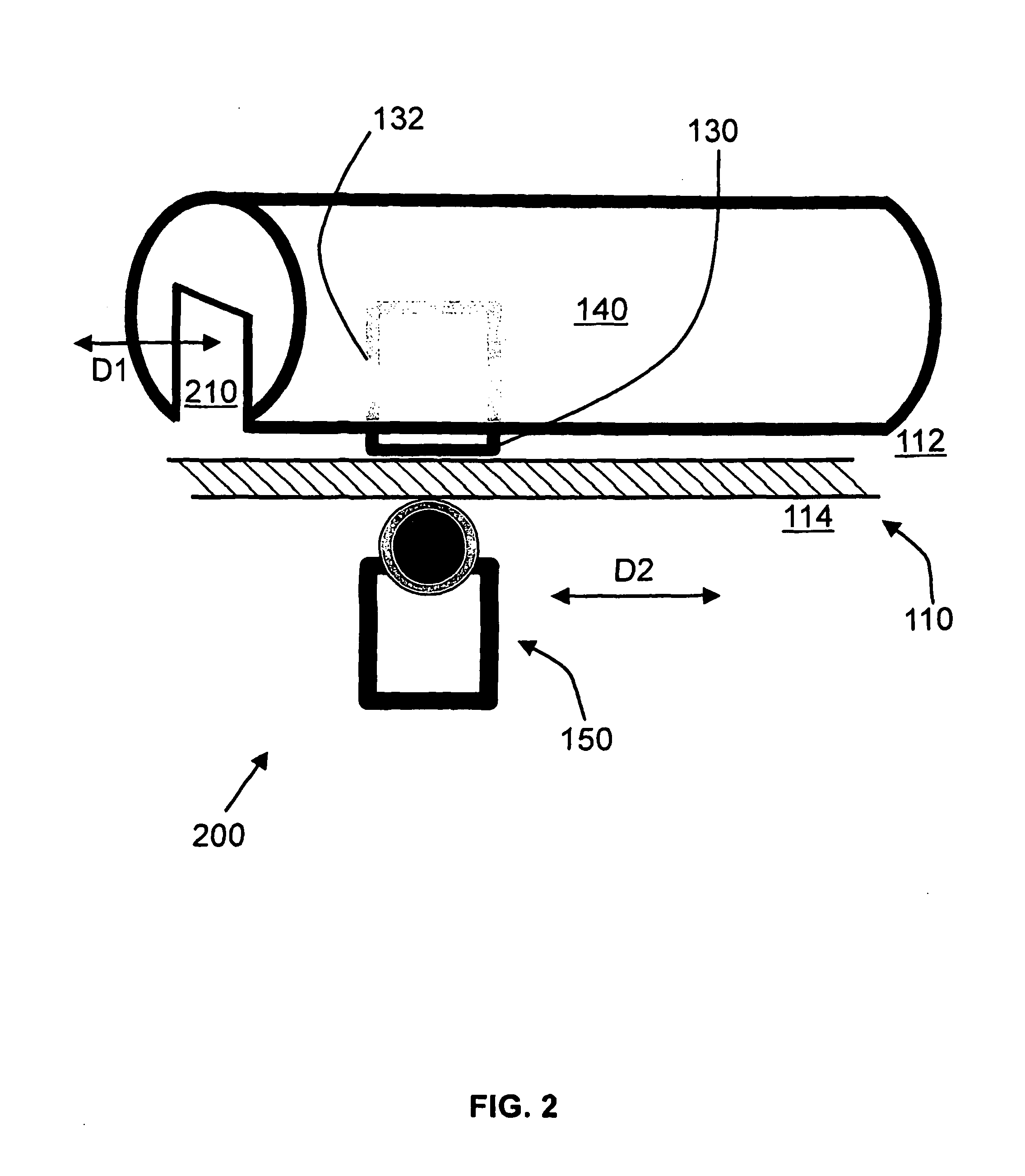Transmural ablation device
a transmural and tissue technology, applied in the field of transmural tissue ablation, can solve the problems of limited accuracy and ease of mapping, limitations of current epicardial and endocardial ablation approaches, and difficulty in achieving transmural lesions using an epicardial approach alon
- Summary
- Abstract
- Description
- Claims
- Application Information
AI Technical Summary
Benefits of technology
Problems solved by technology
Method used
Image
Examples
Embodiment Construction
[0021]The basic concept of the invention is to achieve endocardial and epicardial ablation at the same site but directed from the inner and outer surfaces of the heart to create a transmural (full-thickness) lesion. By ablating from both sides of the heart tissue, it is possible to increase the depth of the lesion created and to increase the likelihood of a transmural lesion. Embodiments of the invention pertain to techniques to align the endocardial and epicardial ablation elements and techniques to position and move the endocardial and epicardial ablation elements along a predefined linear, curvilinear, or circular path. The ability to bring the epicardial and endocardial elements more closely or firmly with the underlying tissue is important in creating optimal lesions. Magnetic force attracts the epicardial and endocardial elements.
[0022]A transmural ablation device to create a transmural lesion of a tissue 110 includes a leading electrode assembly, which typically is at the epi...
PUM
 Login to View More
Login to View More Abstract
Description
Claims
Application Information
 Login to View More
Login to View More - R&D
- Intellectual Property
- Life Sciences
- Materials
- Tech Scout
- Unparalleled Data Quality
- Higher Quality Content
- 60% Fewer Hallucinations
Browse by: Latest US Patents, China's latest patents, Technical Efficacy Thesaurus, Application Domain, Technology Topic, Popular Technical Reports.
© 2025 PatSnap. All rights reserved.Legal|Privacy policy|Modern Slavery Act Transparency Statement|Sitemap|About US| Contact US: help@patsnap.com



